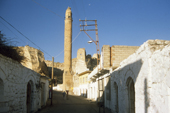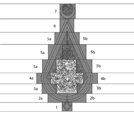Masons at Work
Peter Schneider
Deutsches Archäologisches Institut

Peter Schneider
Deutsches Archäologisches Institut
Detecting Ideas of Rationalization in Medieval Islamic Building Design: The Case of the Rizk Camii in Hasankeyf, Turkey
Hasankeyf is a small town in South Eastern Turkey, capital of an Aiyubid dynasty from 13th to 15th century. The situation on the borders both of the Anatolian, the Levantine and the Iranian cultural spheres is mirrored by the monumental architecture and it´s decoration. In 1409 the Rizk-Mosque was erected, designed by a mamluk architect. It´s design reflects an high effort on rationalization using standardized and prefabricated elements: Most astonishing feature is the minaret. Not more than c. 50 different types of ashlar were necessary to build the 40 m high structure - thereby seeking to realize a maximum on variety in decoration. The doubble-stairs inside, the first known in Anatolia, are made from standard-steps. Other parts of the building can be analized in the same way. The highly remarkable attitude towards an economical organization of design and building process is obvious aswell in the use of prefabricated vaulting elements: both in a structural way using tubular ceramic elements. The minaret, the vaultings and finally the whole layout of the mosque give way to identify concepts of rationalization in medieval islamic architecture, which have not been discussed or even percieved by scholars so far. These concepts, derived from autoptic investigation (Bauforschung) will be the point of debate.


